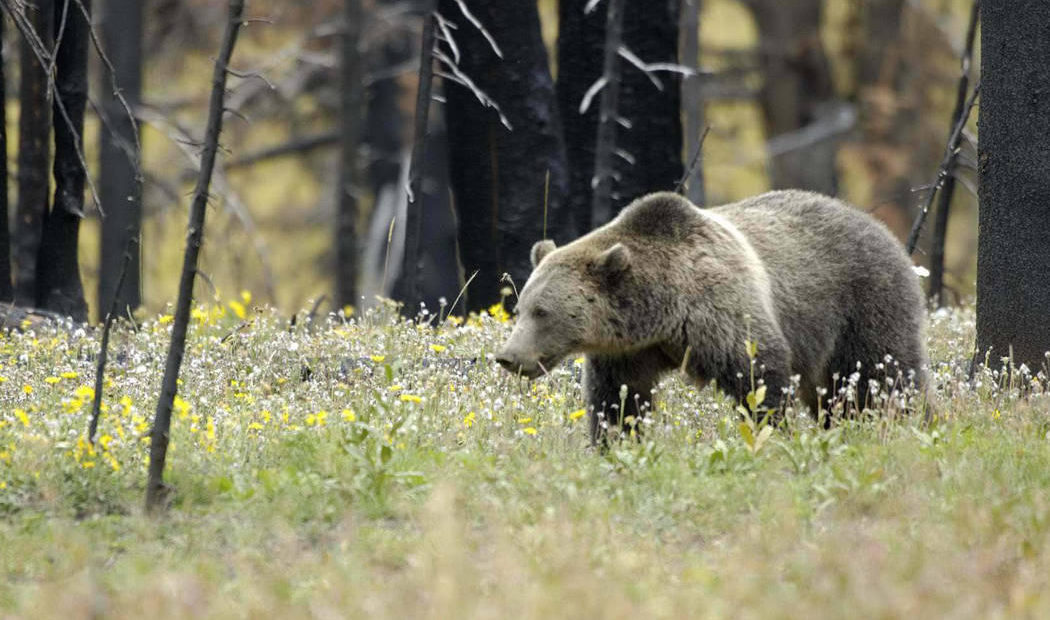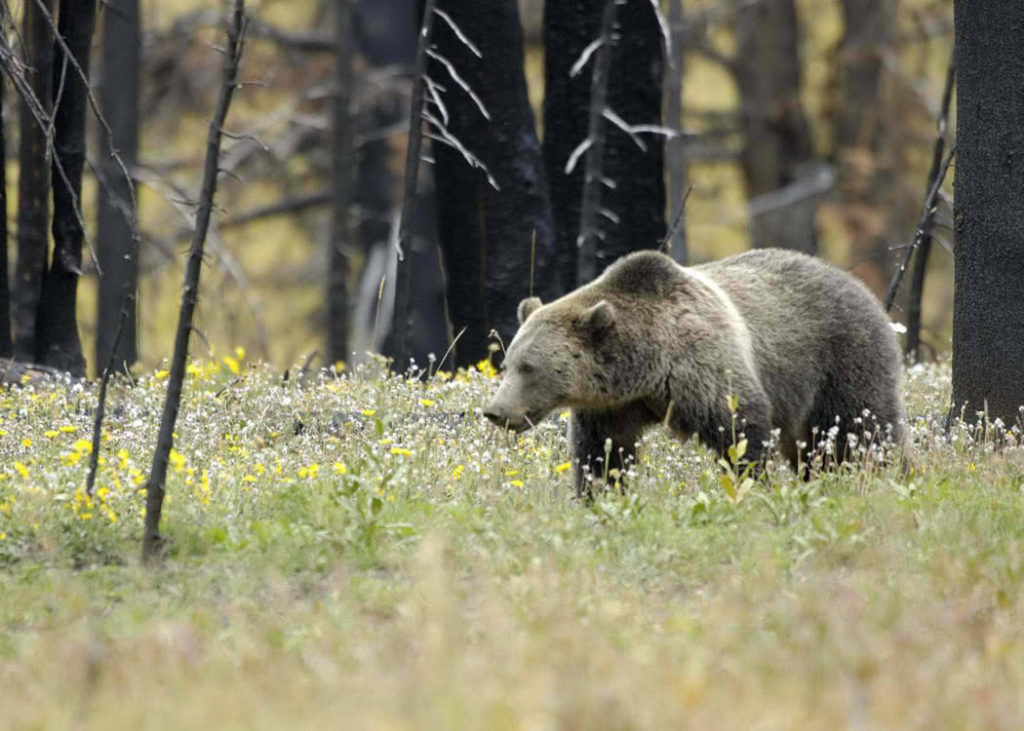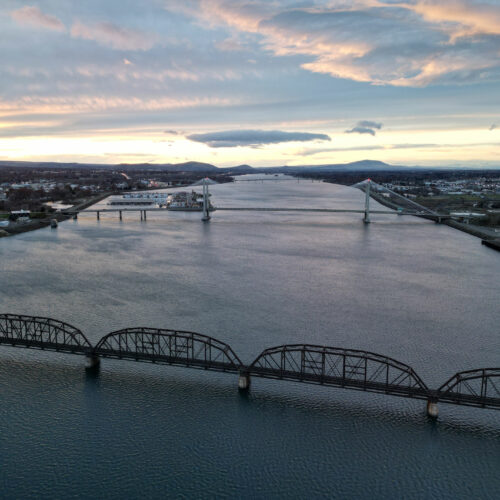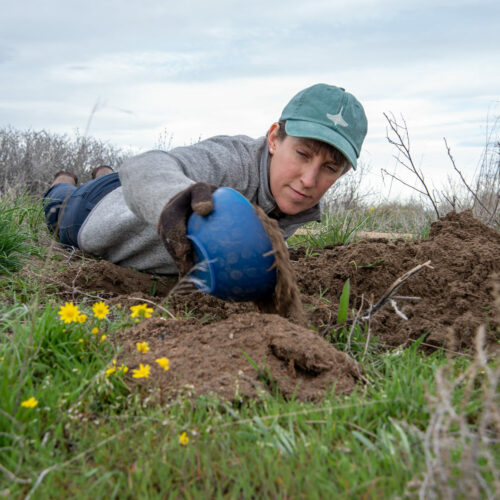
North Cascades grizzly bear translocation study begins with virtual public meetings

LISTEN
READ
Federal officials are taking another look at bringing grizzly bears into the North Cascades. Now, officials want to hear from the public about what to consider this time around.
Officials with the U.S. Fish and Wildlife Service and the National Parks Service presented information about grizzly bears and answered questions Tuesday during a virtual public meeting.
The Department of Interior terminated an earlier effort in 2020 to study the environmental impacts of bringing grizzlies into Washington’s North Cascades. Now, officials will use data and comments from that earlier five-year environmental impact statement process, as they gather information to decide the scope of this process.
“We’re not picking up where we left off before. However, if you made comments on the previous environmental impact statement, we have those. We’re already rolling those into this conversation,” said Jason Ransom, a biologist at the North Cascades National Park Service Complex.
There may only be a handful of grizzly bears left in the North Cascades, making their population functionally extinct, Ransom said.
Grizzlies are tied with the muskox as one of the slowest reproducing mammals in North America, Ransom said. Grizzlies birth one to three cubs every two to four years, he said. Over a roughly 30-year lifespan, biologists said that’s not enough bears to repopulate the North Cascades.
“Not that many cubs in a lifetime. They’re slow growers as a population goes,” Ransom said.
Over the past five years, one grizzly bear has been spotted in the British Columbia section of the North Cascades Ecosystem, roughly 20 miles from the U.S. border, said Ann Froschauer, deputy state supervisor for the U.S. Fish and Wildlife Service.
“We don’t believe that there are enough bears or that the population is growing in the Canadian portion of the North Cascades Ecosystem that we could expect that those bears would be able to naturally recover in the U.S. portion of the ecosystem,” Froschauer said.
That’s one reason federal officials are considering bringing grizzly bears into the region, although they haven’t outlined any of the alternatives yet.
These virtual public meetings are the first step in a lengthy process that’s expected to wrap up in 2024. The scoping meetings and public comments this winter will help federal officials gather information about what they should study during an environmental impact study.
Topics federal officials will consider while studying the potential environmental impacts of bringing grizzly bears to the region include: impacts to other wildlife and fish, wilderness character, recreational experiences, socioeconomics, and areas immediately outside the designated North Cascades Ecosystem.
At the same time as the environmental impact statement, the Fish and Wildlife Service will consider a rule, known as a 10-(j) rule, to designate grizzly bears as an experimental population in an unoccupied part of the bears’ range. Because bears are functionally extinct from the North Cascades, the Fish and Wildlife Service can consider designating these grizzlies as an experimental population, Ransom said.
This experimental population rule would give land managers more flexibility to deal with potential problems.
“This is a way to help reestablish threatened and endangered species in a way that’s a little bit more fluid and flexible with people that are used to living without those species around,” Ransom said.
Canadian officials also are considering grizzly bear management in the North Cascades Ecosystem in Canada.
In response to the reconsideration of translocating grizzly bears to the North Cascades, U.S. Rep. Dan Newhouse, R-Washington, said his constituents had consistently opposed bring what he called another apex predator to the region.
“Introducing an apex predator to the area would threaten the families, wildlife, and livestock of North Central Washington,” Newhouse said in a statement. “It is disappointing that local voices are once again being ignored by federal bureaucrats, even after the last process was discontinued due to overwhelming local opposition.”
However, wildlife advocates said the original environmental impact statement process, which began in 2015, received more than 159,000 public comments supporting a plan to translocate grizzlies to the North Cascades.
“The bottom line is that even with a recovered North Cascades grizzly bear population, these consummate icons of wild habitats will have been driven out of 97% of their former range in the contiguous U.S. through persecution, habitat destruction, and sheer short-sightedness,“ said Rob Smith, Northwest director with the National Parks Conservation Association. “We now have a rare opportunity to redress these wrongs and bestow a huge conservation legacy to our children.”
In addition, grizzly bears represent an important cultural component for some Northwest tribes, said Scott Schuyler, policy representative for the Upper Skagit Tribe, in a statement. The Upper Skagit Tribe’s territory lies within the recovery zone.
“The Upper Skagit people coexisted with grizzly bears in the region for nearly 10,000 years pre-contact,” Schuyler said. “The grizzly has profound cultural significance, and its restoration will enrich our ancestral lands and help restore the foundations of our cultural practices.”
If the federal government decides to translocate grizzly bears to the North Cascades Ecosystem, they’d likely come from farther north in British Columbia or parts of Montana.
Bringing in grizzlies could greatly benefit the North Cascades ecosystem, Ransom said.
Grizzly bears are known as a keystone species, providing an outsized benefit to areas where they’re present. Grizzlies help regulate the population of other species, keep forests healthy by dispersing seeds and berries, and aerate soil by digging for food, which is important for plant species that need disturbed soil to begin growing.
“Grizzly bears play an important role in biodiversity,” Ransom said. “They eat a broad array of foods. They can inhabit a few different ecosystem types.”
Around 90% of a grizzly bear’s diet is plant-based, Ransom said. The bears also eat a lot of insects, he said.
Grizzlies, often identified by the hump on their shoulders, will scavenge carrion, sometimes cleaning up leftover gut piles from hunters. In the spring, they’re more likely to hunt ungulates, like deer fawn or elk calves, because plants may not have bloomed yet, said Wayne Kasworm, a bear biologist with the U.S. Fish and Wildlife Service.
“Bears are predators as well. Not to the extent of wolves or mountain lions because grizzly bears are largely vegetarians,” Kasworm said.
If grizzly bears were moved into the North Cascades, there wouldn’t be enough bears to drastically reduce ungulate numbers, Ransom said.
The Lower 48 has six designated grizzly bear recovery zones. The official North Cascades Ecosystem stretches the boundary between the United States and Canada. Roughly 970 square miles of the total ecosystem is in the United States, Ransom said. Most of that land is managed by the federal government.
In Montana, where Kasworm is based, officials have translocated 22 grizzlies over 30 years from the North Continental Divide Ecosystem to the Cabinet Mountains in far northwestern Montana. Prior to the translocations, the grizzly bear population in that region had dipped to around six bears, he said.
Most of the translocated bears were brought from the backcountry, Kasworm said, to avoid bringing in bears that had been involved in conflicts. Bears previously involved in conflicts often wear radio collars and have markings, such as tagged ears or microchips, he said.
When one translocated bear had a microchip from a previous conflict, Kasworm said, biologists sent it back to the North Continental Divide Ecosystem.
“We’re not looking to bring bears with potential conflict history into this recovery area,” he said.
When conflicts happen, Ransom said, officials have protocols from other grizzly bear recovery zones to deal with bears that damage property or put people’s lives in danger.
More often, Ransom said, bears aren’t the cause of problems in the North Cascades National Park.
“Our rangers already respond to visitor injuries, sometimes fatalities, every single year. Those generally arise from the most dangerous elements of the ecosystem, which is topography and weather exposure. It’s not wildlife,” Ransom said.
People in the North Cascades should already carry pepper spray, travel in ways that don’t surprise wildlife, and store food properly.
“These are things that people in the North Cascades need to do right now, with or without more grizzly bears,” Ransom said. “This is a slight cultural change but not a big cultural change. We already live with big carnivores in this ecosystem.”
Virtual public meetings also will be at 7 p.m. Friday; at noon Thursday, Dec. 1; and at 7 p.m. Friday, Dec. 2.
People can submit public comments through Dec. 14 on the scope of what officials should look at in their upcoming environmental impact statement.















